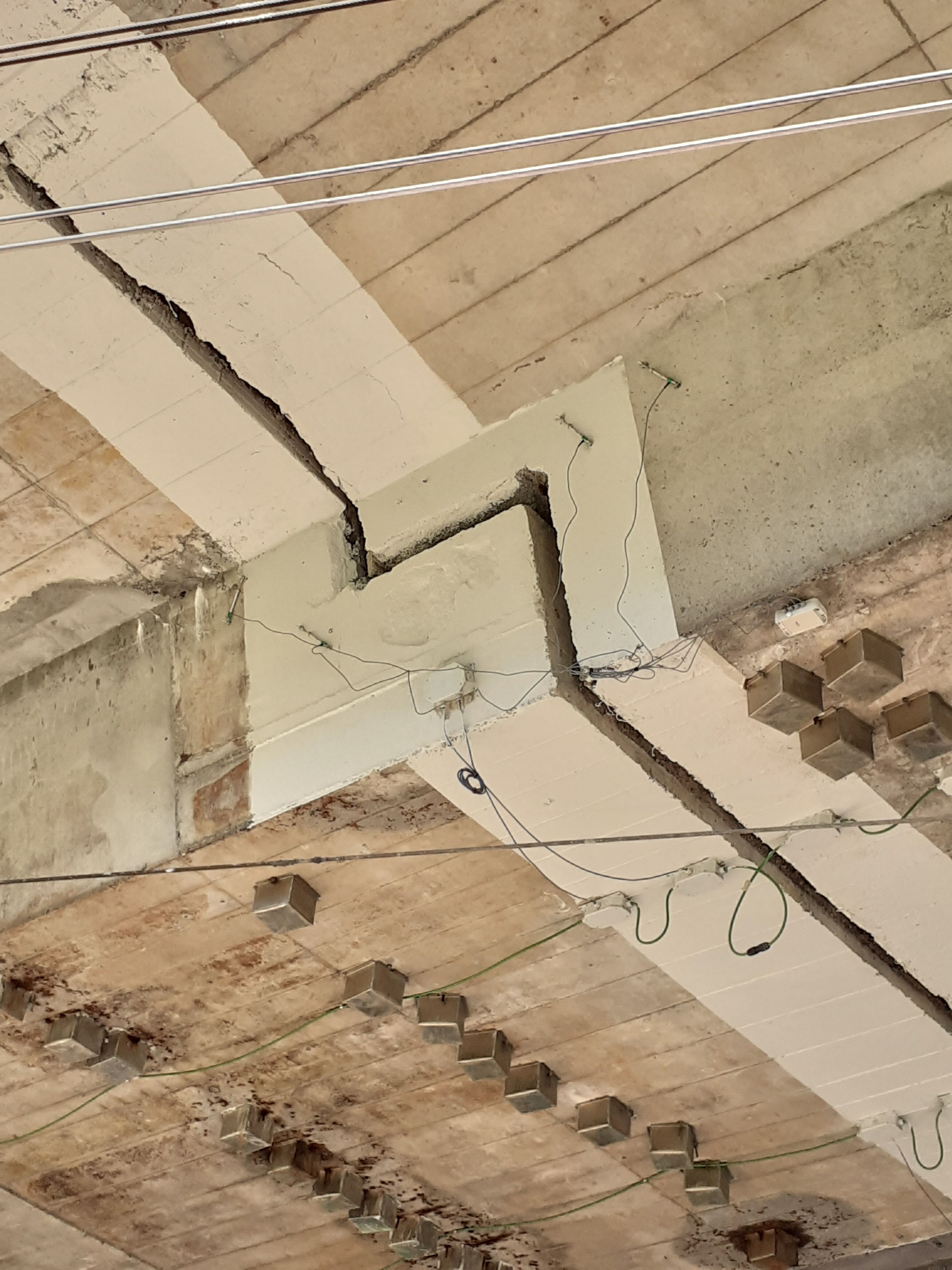Gad Bridge (case study)
Object description
(No object description available.)
Object analysis
The Gad bridge has been subject to continuous monitoring since March 2019 as part of a consulting project of Sacertis Ingegneria srl, to specifically control the structural behaviour over time of the Gerger saddles of the simply supported spans over the Turin-Modan railway, until the deck replacement (planned within the next 5 years time). A non-linear FE model has been calibrated using optimization algorithms based on the static load test results and the analysis of the structural response through long-term data analytics. A local 3D shell FE model has been developed to further validate the results and perform sensitivity tests. The definition of the thresholds, for each sensor of the monitoring system, has been based on the simulation of significant damage scenarios causing a targeted reduction of the reliability levels.
Object state
The Gerber saddles were subject to attention in the past due to the presence of strenghtening works to restore the shear resistance, not sufficient for a lack of shear reinforcement. Strengthening works were necessary, the solution chosen was the adoption of prestressing transversal dywidag bars. The saddles show local cracks and presence of corrosion signs. The Sacertis SHM system installed in March 2019 was developed for both the short and long-term monitoring. Each Gerber saddle is equipped with a chain made by five biaxial MEMS clinometers and four IoT crackmeters. The system is completed by two gateways, one per carriageway and a power line communication to connect all the devices to the network. In each sensor box are present a temperature and humidity detectors, to perform the signal compensation. Prior information available were drawings, design documents, results of periodical visual inspections. The real-time monitoring system controls the response of both clinometers and crackmeters, and an automatic alerting system activates a direct communication to the road operator in case of thresholds levels exceedance.
Images
Documents
(No documents available for this case study.)
This case study was contributed by Paola Darò of SafeCertifiedStructure Ingegneria S.r.l.. Last edited by technical staff.

